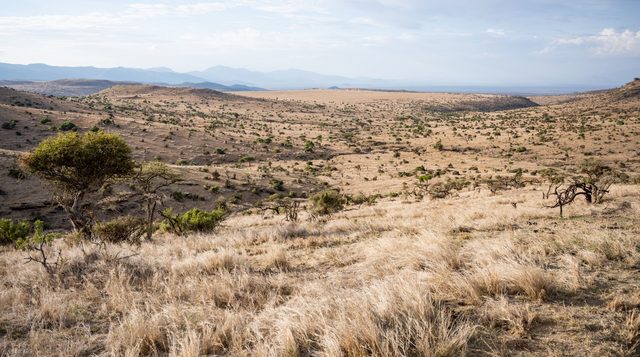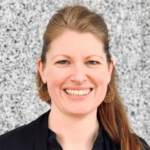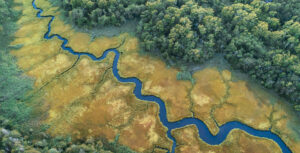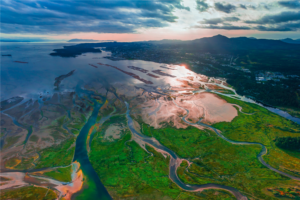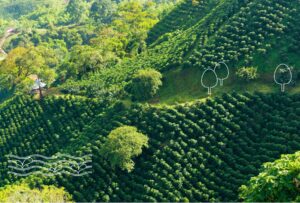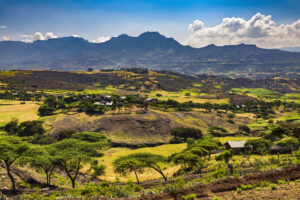Innovative solutions for promoting healthy rangelands under a changing climate
On 21 August 2023, CA4SH joined CIFOR-ICRAF, Focali, IGAD, SIWI, SLU, University of Nairobi, and WWF at the 2023 World Water Week organized by SIWI in an online session to discuss water-smart rangeland restoration.
This blog post was originally published by Coalition of Action 4 Soil Health (CA4SH)
The theme of this year’s World Water Week was Seeds of Change: Innovative Solutions for a Water-Wise World, facilitating conversations about how we manage water through the nexus of innovation, governance, and science. Moderator Malin Lundberg Ingemarsson (SIWI) opened the joint session by inviting participants to challenge the status quo of under-valuing rangelands in targeted investments for innovation.
Keynote speaker Leigh Ann Winowiecki (CA4SH co-Lead and CIFOR-ICRAF Soil and Land Health Global Research Lead) issued a call to action in advance of the upcoming 2026 Year of Rangelands, stressing that “now is our opportunity to convince the community to come together on rangeland health.” To do this, she underscored the importance of investing in rangeland restoration and rangeland health monitoring, scaling innovations, filling research gaps, and providing scientific evidence to demonstrate the effectiveness of restoration efforts over time. She also highlighted the key role of community engagement and the importance of encouraging farmer and pastoral-led innovations.
Monitoring rangeland health, understanding drivers of land degradation, and tracking restoration progress is entirely within our reach using the innovative Land Degradation Surveillance Framework (LDSF) coupled with Earth Observation (EO) and citizen science. Leigh Winowiecki described the systematic, landscape-level framework which measures a variety of land health indicators including soil infiltration capacity. She shared an example study from the Drylands Transform project in Kenya and Uganda which identified key determinants of water infiltration into the soil, including soil carbon content. Soil infiltration capacity is a critical indicator of land health as it determines the maximum rate at which water can enter the soil, controlling the generation of surface runoff and erosion, which are key drivers of land degradation. Leigh Winowiecki shared that the LDSF is inexpensive and accessible, and called for increased investment in capacity building for farmers and pastoralists to monitor the health of their land and contribute to filling data gaps through citizen science.
While the LDSF is a global initiative, case studies showed session participants innovative solutions being implemented in Kenya, Uganda, and Burkina Faso. Margeret Nyaga, PhD student at the Department of Land Resource Management and Agricultural Technology at the University of Nairobi, shared her research within the Drylands Transform project led by the Swedish University of Agricultural Sciences (SLU). Margeret is investigating landscape restoration through Livestock Cafes – knowledge-sharing hubs and experimental sites where the project engages with local communities, extension workers, NGO practitioners, and authorities to test and demonstrate innovative land restoration and water management options – in the Karamoja region between Kenya and Uganda. Water-smart innovations like water harvesting with half moons, rock check dams, vetiver grass planted along contour lines, and reseeding of rangeland grasses and legumes showed evident results after just one year of implementation.
Aubin Ouedraogo (Terre Verte) shared the results of promoting Bocage Perimeters (wégoubri in the Mooré language) in Burkina Faso. These are integrated systems with trees, livestock, and crops working together to fight land degradation by controlling livestock grazing and promoting agroecological best practices. The first vocation of the bocage is to keep water where it falls by creating bunds, ponds, and living hedges, in order to mitigate the erosive action of monsoon waters and maintain the biodiversity of the area. Surface runoff is collected in harvesting ponds to recharge groundwater and the bocage perimeters are subdivided into fields that are managed by local families for increased food security.
Following the presentations, Margeret Nyaga and Aubin Ouedraogo joined an interactive panel with Dominic Kathiya (IGAD, ICPALD), Melissa D.Ho (WWF-US), and Aida Bargués-Tobella (SLU). Panelists were asked about the role of rangelands in biodiversity conservation and climate, the key aspects of water-smart restoration in rangelands, as well as barriers to upscaling restoration and soil health interventions and the tools we need to do it.
The panelists echoed the message that rangelands have been overlooked for too long, and that it’s time for a shift in focus when it comes to climate and biodiversity conversations and investments. Melissa D. Ho pointed to the Cerrado savanna in Brazil, neighbor to the Amazon rainforest, which covers 21% of the country’s land cover but which is nowhere near a household name like the Amazon is. Aida Bargués-Tobella highlighted the dichotomy between water as both a driver of erosion and a source of life and resilience and therefore the cornerstone for restoration in the changing global climate. The key? Healthy soil captures water, making it reliably available for plants to thrive while reducing water-related risks and disasters such as floods and droughts.
These points were well-rounded by Dominic Kathiya who discussed the important role of harmonizing policy and practice to scale implementation of water-smart rangeland restoration. He also reminded session participants that rangelands are important sources of livelihood and that restoration activities must address sustainable use by humans, including support for the extension of resources and management programmes. In closing the session, Stephen Mureithi reiterated the multiple benefits of rangeland restoration including enhancing food and nutrition security, water security, resilience building against climate change, reversing land degradation, and halting biodiversity loss. He called on governments, agencies, and non-governmental organizations to co-work with communities to enable them to achieve restoration in landscape scales.
This session at the 2023 World Water Week marks a pivotal moment for rangelands, and came at the timing couldn’t have been better to complement some exciting news received the week prior. The Swedish Research Council for Sustainable Development, Formas, announced grant funding for the research project Scaling rangeland restoration in drylands through synergies in the biodiversity – water- climate nexus (Restore4More) led by SLU in partnership with CIFOR-ICRAF, the University of Nairobi, Makerere University, Stockholm University, Linköping University, IGAD-ICPALD, SIWI, and Vi Agroforestry. The long-term goal of Restore4More is to generate knowledge on the biodiversity-water-climate nexus that can contribute to large-scale, long-lasting, and effective rangeland restoration in the drylands of East Africa for increased climate change adaptation and mitigation, enhanced biodiversity, and water and food security.
Event details
During this session, they discussed innovative solutions that jointly address the challenges of water and food insecurity, biodiversity loss, and climate change in rangelands.

